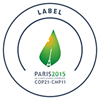�
Our Common Future Under Climate Change
International Scientific Conference 7-10 JULY 2015 Paris, France

BedZED eco-village, England.
Low carbon building, cars, energy and food options exist - now time to mainstream
201507-09
By Bastien Girod, ETH Zurich
Bastien will present at the CFCC15 event �Mainstreaming low-carbon consumption: Opportunities, challenges and promising policy approaches� on Thursday 9 July at 15:00
Electric vehicles using renewable power, building with net energy production, products out of regenerative materials, meals with low climate impact: The options to avoid dangerous climate change are already on the table. However, today these products are only present in niche markets. A major climate mitigation challenge is to mainstream existing low carbon consumption options.�
This requires policy support. Interestingly policies supporting the development and market penetration of low carbon products such as labels, subsidies and standards were quite successful for buildings and cars in many regions. They managed to significantly reduce average carbon intensity and have brought low carbon options such as electric vehicles and low energy buildings to the mainstream.�
For instance average direct emissions of newly sold cars were above 180 g CO2/km in 1990. They only decreased in 1995 when the EU started to promote low carbon emission cars through mandatory carbon intensity labels and industry agreements. With the binding standards enforced in 2009, the decline in average emission was further accelerated and dropped to below 130 g CO2/km by 2015. For 2021 average emissions of 90 g CO2/km are required. This is only possible because the climate policies induced also the development and diffusion of low carbon cars such as hybrid and electric cars. For building, the policy development is even further advanced with the EU requirement for nearly zero-energy buildings by 2020.�
When evaluating the evolution of these climate policies supporting the market penetration of low carbon products, we find that they gradually developed towards higher stringency and scope. This can be explained by the co-evolution of climate regulation and low carbon technology, but also by path dependency of policies:�
Regulatory institutions once built-up can be extended and reinforced with relatively little effort. �
To achieve the 2 degree target it will however not be enough to increase the stringency of these policies. Globally, buildings and cars amount to �only� 25% of total greenhouse gas emissions (see IPCC 2014). To address also the other 75% emissions with the relatively successful product oriented policies the embodied emissions of consumption need to be considered too. Embodied emissions are for instance the emissions from producing food and daily products.�
Some policy initiatives with this ambition to include embodied emissions exist already. Take the European Union for instance. The Fuel Quality Directive explicitly accounts for embodied emissions. With timber regulation, embodied land-use emissions from deforestation are reduced. But for most daily products, only some voluntary labels consider the embodied environmental impacts. For instance the Nordic Swan, the German Blue Angel and the Carbon Reduction Label in the United Kingdom.�
Giving more research attention to this type of policy instruments could accelerate the extension of product-oriented policies towards the integration of embodied emissions. Important barriers to be overcome include the international harmonization of carbon footprinting rules and the weighing of carbon emissions compared to other sustainability impacts.
Bastien Girod is senior researcher at the ETH Zurich. His research focuses on the climate mitigation challenge with an emphasis on changes in household consumption and the development of low carbon innovations. At the same time Bastien Girod is Member of the Swiss Parliament and Committees for the Environment, Spatial Planning and Energy since 2007.�http://www.sustec.ethz.ch/people/sr/bgirod.html�
This is part of a blog series profiling climate scientists, economists, social scientists and civil society members who are presenting and discussing innovative climate science at Our Common Future. For more follow @ClimatParis2015 and #CFCC15 on Twitter.







